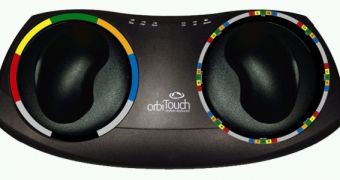Autistic people are notoriously difficult to converse with, and scientists proposed bridging this divide with computers some time ago. But this has proven to be hard to do as well, mostly because of the large number of keys that sufferers have to use. To solve this problem, experts from the Project Blue Skies have created a keyboard with a unique layout that features no more than two buttons. The keys are able to perform a wide range of functions, making the device similar to a normal one.
The teachers who are part of the Project have also designed the keyboard following a new curriculum, which they hope will benefit the children in the sense that they will become able to explore the online world the best way they see fit. The basic concepts related to the new keyboard, called OrbiTouch, were developed more than ten years ago by human-factors engineer Pete McAlindon, from the Maitland, Florida-based BlueOrb enterprise. The expert says that the new keyboard also prevents and alleviates the existing carpal tunnel syndrome.
This means that even people with limited use of their fingers can still enjoy its benefits. Turning the concept into reality became possible once the US National Science Foundation (NSF) awarded the researchers working on the device the Small Business Innovation Research series of funds. “If you are unable to use a keyboard and mouse effectively or at all because of a physical disability, what chance do you have of using a computer? The OrbiTouch is designed to keep people with physical or developmental disabilities connected to their computers,” McAlindon says.
The new layout features two mouse-like controls, which can be moved to the sides, front and back, and also in diagonal. If the user suffers from the carpal tunnel syndrome, then these motions are easier to do than actually moving the head around over the keyboard and tapping on the desired letter. The device comes complete with lesson plans, training aids and assessment tools.
“I have watched Pete McAlindon grow and change over the last decade. He has taken the concept that he developed as dissertation research, and using his skills as a human factors engineer, turned it into a very creative device to help people with disabilities. The result of his skill and persistence is the evolution of his technology into an ingenious adaptation, one that makes his goal of providing for persons with disabilities a sustainable effort,” NSF's Partnerships for Innovation Program Director Sara Nerlove adds.

 14 DAY TRIAL //
14 DAY TRIAL //